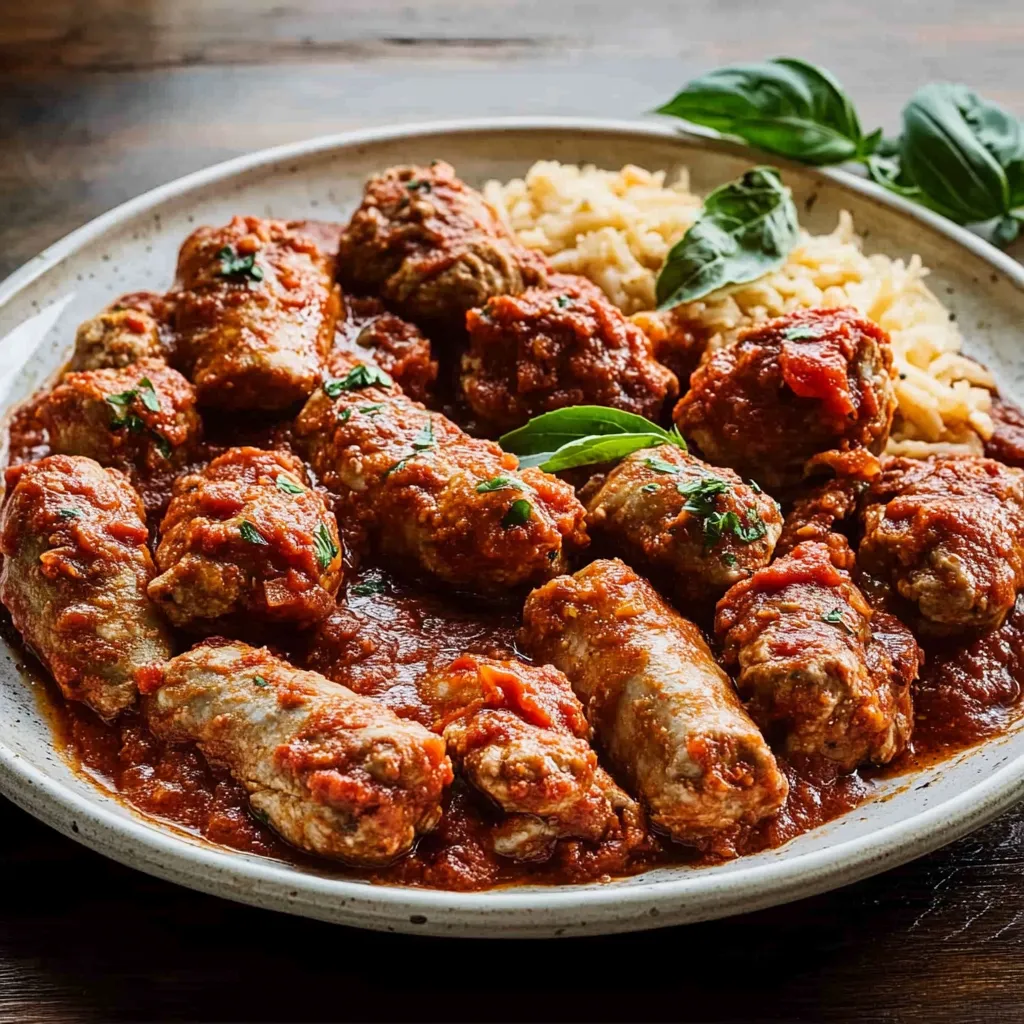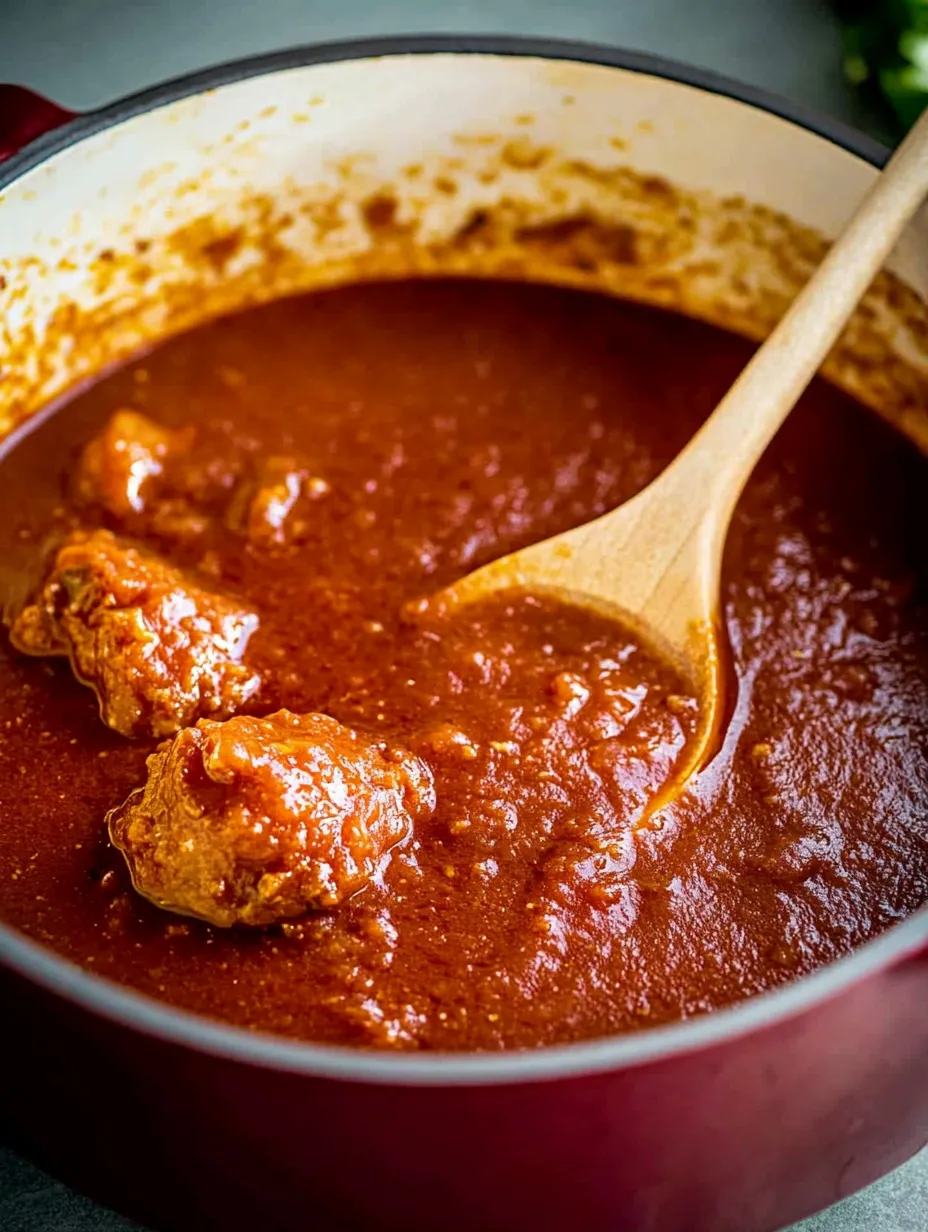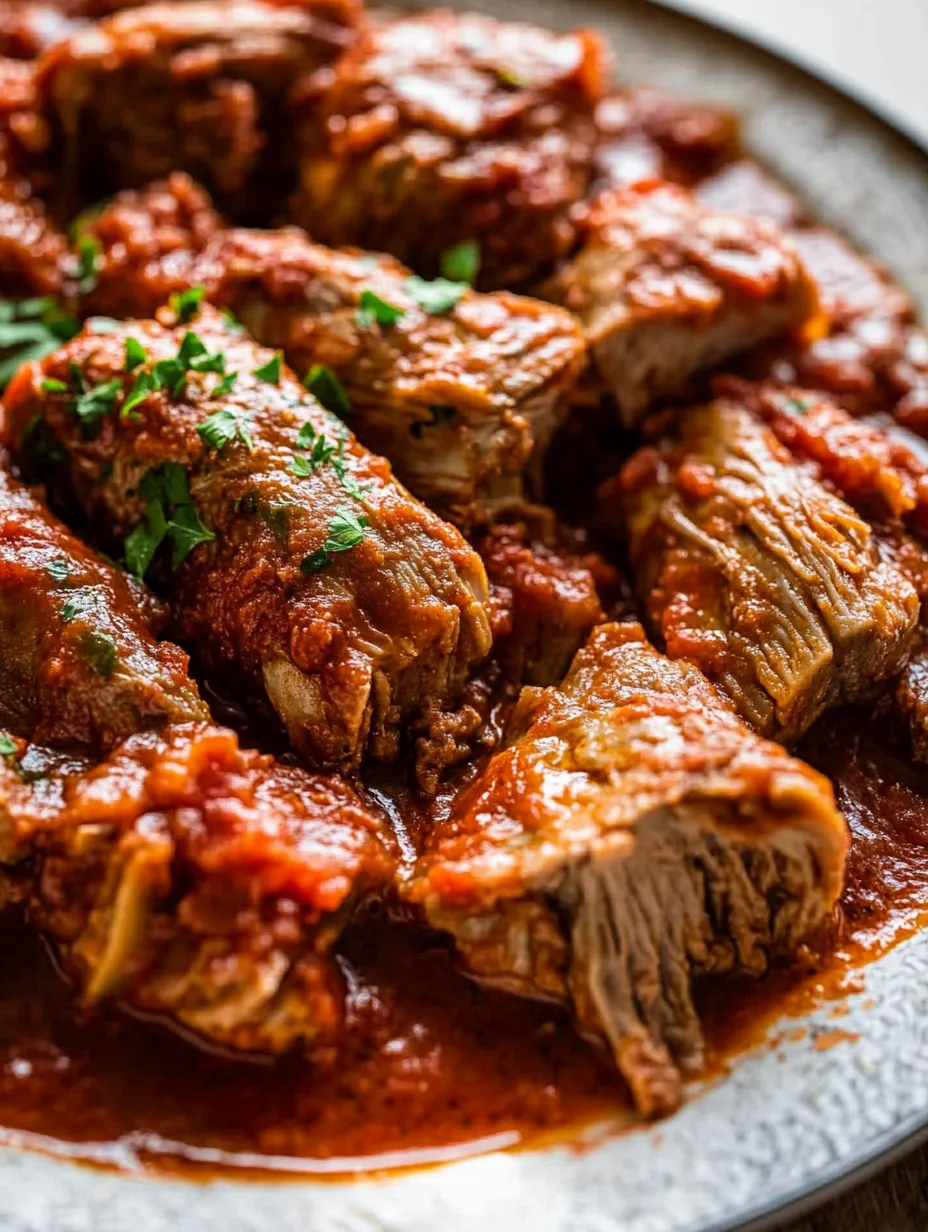 Save
Save
This authentic Italian Sunday gravy has been my family's cherished recipe for generations, passed down from my Sicilian ancestors. The rich red sauce simmers for hours with meatballs, Italian sausage, and tender slow-cooked pork, creating a hearty meal that brings everyone to the table.
I first made this Sunday gravy when I wanted to recreate the flavors from my childhood. Now it's become our own family tradition, with my children excitedly asking when "gravy day" is coming each week.
Ingredients
- Extra virgin olive oil The foundation for authentic Italian flavor that helps brown the meat perfectly
- Pork cuts Traditional choices include loin, chops, ribs or neck bones for richness and depth
- Yellow or sweet onion Provides aromatic sweetness while creating the flavor base
- Thinly sliced garlic Essential Italian flavor that infuses throughout the sauce
- Red chili flakes Just a pinch adds subtle warmth without overwhelming heat
- Tomato paste Optional but creates wonderful body and deeper tomato flavor
- Whole peeled tomatoes The main ingredient for authentic texture and fresh tomato taste
- Bay leaves Contributes subtle herbal notes throughout the long cooking process
- Italian parsley Adds brightness to balance the rich meats
- Italian sausage Both sweet and hot varieties work beautifully for flavor contrast
- Homemade meatballs The crown jewel of Sunday gravy that absorbs all the beautiful flavors
- Pasta The perfect vehicle for serving this rich sauce
- Pecorino Romano cheese Adds wonderful salty depth when grated over the finished dish
- Ricotta cheese A creamy addition traditionally passed at the table for guests to add as desired
Step-by-Step Instructions
- Sear the Pork
- Heat olive oil in a large Dutch oven over high heat and brown pork pieces on all sides until deeply caramelized. This step creates incredible flavor compounds that will infuse the entire sauce. Take your time and get a nice crust on all sides of the meat before removing.
- Sauté the Aromatics
- Reduce heat to medium and add diced onions to the pot, cooking until translucent and soft, about 5 minutes. The onions will absorb all the caramelized bits from the meat and release their natural sweetness.
- Bloom the Garlic
- Add thinly sliced garlic and chili flakes, cooking gently for 2 minutes until fragrant but not browned. Garlic burns easily, so watch carefully and stir frequently.
- Develop the Tomato Base
- Stir in tomato paste and cook for 1-2 minutes to caramelize slightly and remove any raw flavor. This deepens the tomato flavor throughout the sauce.
- Build the Sauce
- Add whole tomatoes, bay leaves, and parsley, then season with salt and pepper. Fill one empty tomato can with water and add to the pot. If using whole tomatoes, break them apart with a wooden spoon or use an immersion blender for smoother texture.
- Slow Simmer
- Bring sauce to a boil, then add all meats and reduce heat to the lowest possible setting. Let everything simmer gently for about 3 hours, stirring every 20 minutes to prevent burning. The sauce will slowly transform as the meats release their flavors.
- Rest and Separate
- Turn off heat and allow meats to rest in the sauce until ready to serve. Remove bay leaves and any bones, then transfer meats to a serving platter with a slotted spoon.
- Serve Family Style
- Toss al dente pasta with a little sauce first, then serve the remaining sauce in gravy boats alongside the platter of meats. Provide bowls of grated Pecorino Romano and ricotta for passing at the table.

My grandmother always insisted on using pork neck bones in her gravy, saying they added a special richness that couldn't be replicated. When I prepare this dish, the familiar aroma fills my kitchen and instantly transports me back to Sunday afternoons in her home, with family gathered around the table talking loudly and passing platters of pasta.
The Art of Stirring Sunday Gravy
Proper stirring technique is crucial when simmering Sunday gravy. Use a wooden spoon to gently scrape the bottom of the pot every 20 minutes, making sure to reach all corners where scorching might occur. The slow, consistent motion helps distribute heat evenly while preventing burning. My nonna taught me to stir in a figure-eight pattern to ensure nothing sticks to the bottom without disturbing the meats too much.
Storing and Reheating
Sunday gravy actually improves with age as the flavors continue to develop. Store cooled sauce in airtight containers in the refrigerator for up to 5 days. For longer storage, freeze portions in plastic containers or ziplock bags for up to 3 months. When reheating, do so gently over low heat, adding a splash of water if needed to reach desired consistency. Always reheat until thoroughly hot but avoid rapid boiling which can break down the texture.
The Tradition Behind Sunday Gravy
This iconic Italian-American dish originated as "la domenica sugo" in southern Italy, where economical cuts of meat were slowly simmered in tomato sauce after Sunday mass. When Italian immigrants came to America, the tradition continued but evolved with greater abundance of meat. The English word "gravy" was adopted to describe this rich sauce, though in Italy it would simply be called "sugo" or "ragù." The lengthy cooking process made Sunday the perfect day for preparation, creating a tradition that has sustained Italian-American families for generations.
Serving Suggestions
While spaghetti is commonly paired with Sunday gravy in America, traditional Italian custom favors thicker pasta shapes that stand up to the robust sauce. Rigatoni, pappardelle, or homemade cavatelli make excellent choices that catch pockets of sauce. Serve the pasta and gravy separately, allowing guests to combine as desired. Always start with crusty Italian bread for dipping and a simple green salad dressed with olive oil and lemon to balance the richness of the main course.

Recipe FAQs
- → What cuts of pork work best for Sunday gravy?
For the most flavorful Sunday gravy, use a combination of pork cuts like pork loin, pork chops, ribs, or neck bones. The bones and fat enhance the sauce during the long cooking process. Select cuts with some fat for richness and tenderness as they simmer for hours.
- → Can I make Italian Sunday gravy in a slow cooker?
Yes! After sautéing the vegetables and adding tomatoes, transfer everything to a slow cooker with the meats. Cook on low for 5-6 hours until the pork is falling apart. This hands-off method works beautifully while maintaining the authentic slow-cooked flavor.
- → Is adding sugar to Sunday gravy authentic?
Adding sugar to tomato sauce is somewhat controversial among Italian cooks. However, a small pinch can help balance acidity in the tomatoes without making the sauce sweet. It's an optional step - taste your sauce first and add only if needed to mellow any sharp acidic notes.
- → How should I serve Sunday gravy?
Traditionally, Sunday gravy is served family-style. Place the meats on a separate platter from the pasta. Toss al dente pasta with some sauce, then serve additional sauce in gravy boats. Offer grated Pecorino Romano and ricotta cheese on the side for guests to add as desired.
- → How long does leftover Sunday gravy last?
Leftover Sunday gravy actually improves in flavor and can be stored in the refrigerator for 3-4 days. For longer storage, freeze portions in airtight containers for up to 3 months. Many Italian families intentionally make extra for enjoying throughout the week or freezing for future meals.
- → What type of pasta pairs best with Sunday gravy?
Robust pastas that can stand up to the hearty sauce work best. Traditional choices include rigatoni, pappardelle, tagliatelle, or penne. The ridges or wider surfaces of these pasta shapes help catch and hold the thick sauce. Spaghetti is also popular in many Italian-American households.
